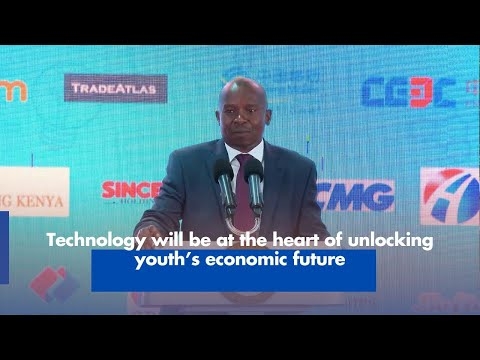Ponder this. A sand vendor is selling a bucket for Sh100. His son enters into a deal with a customer to give two buckets at Sh150 so that he pockets Sh50 and deceives the poor father that he only sold a bucket.
To cut a long story short, the sand is depleted, the supplier is demanding his share and in the end, the family business collapses.
POWER THEFT
This analogy perfectly suits Kenya Power, which is losing billions every month in power theft amid huge debt from suppliers and creditors.
The power distributor suffered Sh15.99 billion system losses beyond what it is allowed to recover from consumers in the year ended June 2020.
The firm’s system losses rose 23.46 per cent in the period, well beyond the 14.9 per cent that the regulator had allowed it to pass on to customers’ bills in 12 months.
An internal power sales audit seen by the Star shows how Kenya Power staff colluded with heavy power users, redirecting billions from the company’s sales by dropping the line.
Line loss or drop is the electrical energy lost in voltage between two points on an electric line. It is often caused by resistance or leakage along the line due to inherent inefficiencies in an electrical transmission and distribution system.
The power utility has sub power stations at most manufacturing firms. To execute the theft, technicians tamper with the meters to read at half when the actual consumption is at full.
According to the report, at least three cement firms, a steel company and a plastics firm have been paying half of their actual power bills, denying Kenya Power almost Sh500 million every month.
One of the cement firms, which produces high volumes, paid half of what its rival paid in June, though the rival produces far less.
Technical losses occur when electrical energy is dissipated in the process of transmission and distribution. Commercial losses are mainly attributed to pilferage, faulty meters and meter tampering.
Kenya Power hopes to cut its system losses to 19.9 per cent by 2025, riding on a raft of measures such as technology to curb electricity theft and reduce technical losses
Due to power theft and poor collection mechanisms, the firm has been forced to incur billions to cover the losses.
Additionally, provisioning for debtors amounted to Sh2.6 billion for the year ended June 30, 2019, and Sh3.25 billion for the year ended June 30 last year. Further provisioning amounted to Sh3 billion for the period to June 30 this year.
The total provisioning since 2018 has been Sh8.25 billion. The company has currently provided in excess of Sh18 billion out of its total debt.
According to the audit report, management’s inability to systematically and comprehensively address system losses — and for system losses to remain in the 24 per cent range as of June 30, 2021, against a budgeted figure of 20.5 per cent in 2020 by the end of June 2020 — has resulted in about Sh4 billion in system losses being incurred beyond the budgeted amount in the period ended June 30 this year
Kenya Power insists that system loss reduction is one of the five key focus areas of the company’s turnaround strategy The others are improved customer experience, sales growth, enhanced revenue collection and cost management.
In a response to our queries, the firm said system losses take two forms: technical losses, which are inherent in the distribution process, account for about 12.1 per cent. Commercial losses, which are the result of pilferage, mostly at the end-user point, account for 11.85per cent of the total.
“In the last financial year, the company targeted a three per cent reduction from 23.65per cent, however, by the close of the year, the losses recorded stood at 23.95 per cent,’’ Kenya Power said.
It revealed that a slight reduction of 0.41 per cent was realised in commercial losses, but was negated by increased technical losses due to the relocation of the electricity infrastructure along the Nairobi Expressway, which is under construction.
It also cited vandalism that affected an underground sub-transmission line in Nairobi, resulting in load redistribution and occasional load shedding.
"The poor loss reduction was aggravated by the non-completion and commissioning of the Suswa-Lessos-Kisumu line, which was expected to reduce technical losses by at least 0.98 per cent. The absence was the continued load management activities within Western Kenya," Kenya Power said.
It added that the improvement of the commercial loss was a result of focused effort by management supported by data analytics and technology through a war room strategy that involved staff across the company.
This was, however, mainly achieved in the second half of the year after the board’s intervention.
LAST MILE PROGRAMME
Kenya Power’s system losses have increased from 18.68 per cent to the current level over a seven-year period on the back of network expansion, especially in the Last Mile programme.
According to the report in the Star's possession, the project meant to connect 70 per cent of Kenyan households by 2017, thereby achieving universal access by 2020, is the biggest loss-making venture for Kenya Power.
While normal power connectivity costs Sh74,000 per unit, users under the Last Mile programme pay only Sh15,000, with the balance shouldered by Kenya Power.
This, despite the venture being financed by the African Development Bank and the government.
Even so, an insider at the firm told the Star the National Treasury has never disbursed the funds.
The National Treasury had not responded to the Star's enquiry on this matter by press time.
The First Phase of the project was to benefit 314,200 non-commercial customers (households), resulting in electricity access by an additional 1.5 million Kenyans.
This phase was to involve the extension of the low voltage network to reach households within 600 metres of a transformer.
Kenya Power set aside 5,320 transformers in all 47 counties to implement the first phase of the project. Actual connectivity began.
The second and third phases of the project included the installation of new transformers and the extension of a low- voltage network. The aim was to reach an additional 500,000 customers, thereby adding 2.5 million Kenyans to the power grid.
The selection of distribution of the transformers for the Last Mile project is based on Government Constituency Development Fund criteria for resource allocation.
(Edited by V. Graham)











